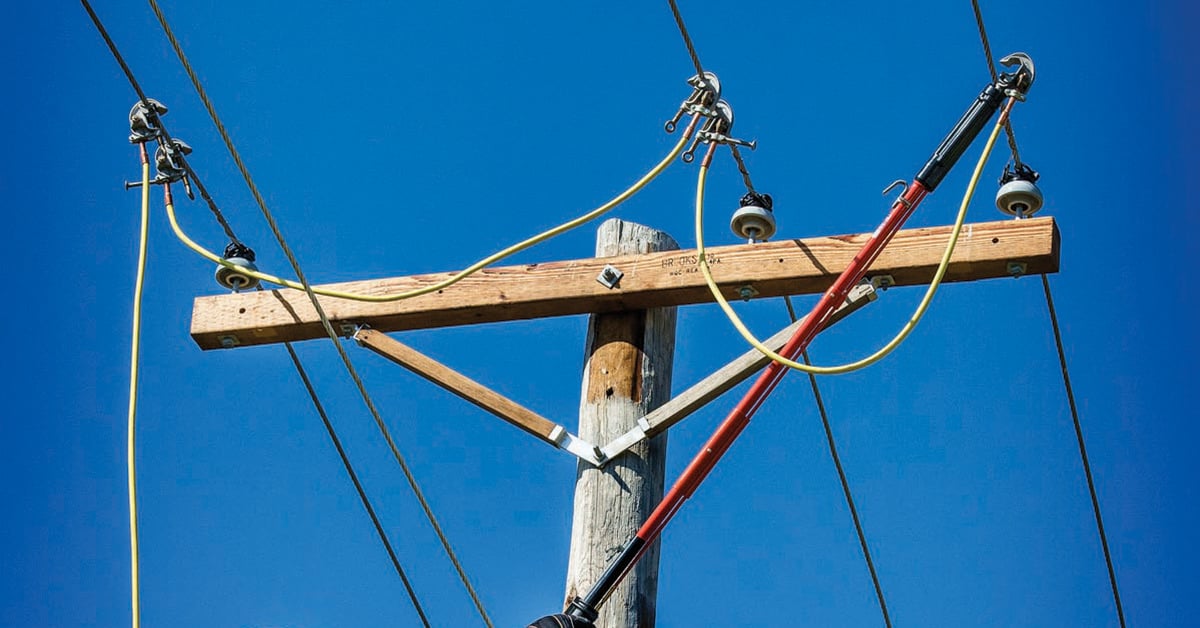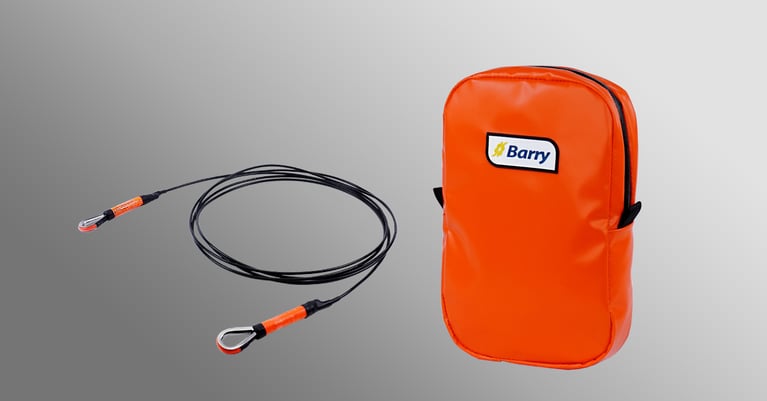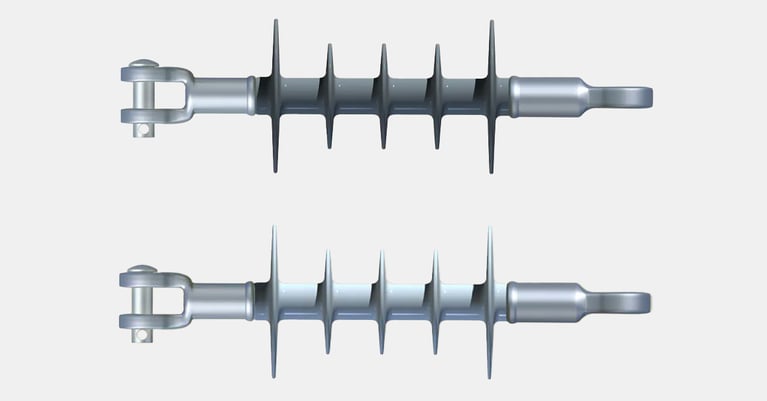 CHANCE® Personal Protective Ground Sets are an important tool for lineworkers to use during de-energized line maintenance. The ground sets serve two purposes; one is to provide an Equi-Potential Zone (EPZ) minimizing current flow through a lineworker and the second is enabling the clearing of the fault in the fastest available time. In order to make sure the personal protective ground sets will function properly during daily use, daily inspection and periodic testing must be performed.
CHANCE® Personal Protective Ground Sets are an important tool for lineworkers to use during de-energized line maintenance. The ground sets serve two purposes; one is to provide an Equi-Potential Zone (EPZ) minimizing current flow through a lineworker and the second is enabling the clearing of the fault in the fastest available time. In order to make sure the personal protective ground sets will function properly during daily use, daily inspection and periodic testing must be performed.
Daily Inspection:
Before each use, Personal Protective Ground Sets should be visually inspected for wear and tear. Threaded and plain-plug ferrules installed on the grounding cable should be installed tightly in the ground clamps and crimped tightly on the grounding cable. The ground clamps should be inspected for cracks in the body, bent eye-screws, or any other mechanical damage. It is also a good practice to clean the jaws before installation to remove any oxidation on the jaws. The oxidation can cause a higher resistance in the path to ground. The ultimate goal is to limit the resistance in the ground sets. Turn the ground clamps’ eye-screws fully in and out to ensure they move freely during operation. Inspect the grounding cable for broken strands or cuts, especially near the connection with the ferrules. Broken strands or cuts in the cable can also lead to higher resistance. This may end up causing the ground set to not provide adequate protection during a fault. ASTM F2249 Section 5 also provides a list of items to inspect on a ground set.
Testing:
The CHANCE factory recommended duration between ASTM F2249 DC milliohm resistance tests for personal protective ground sets should not exceed 1 year. The testing would also need to be performed if there is a reason to suspect damage to the ground set has occurred. Testing can be done with the CHANCE portable ground set tester. The tester measures the DC milliohm resistance and the reading is then compared to the values in ASTM F2249 Table X1.3 Rmax Limits – DC Resistance (mΩ) (Cable + Terminations) or using Equation 4 in the standard. If the measured resistance is higher than the maximum allowed by ASTM F2249, the ground set tester includes probes to help find the area of high resistance in the set. If any of the components of the ground set are found to be damaged during testing or inspection, then they should be replaced, and the ground set should be tested before placing it back into service.
Repair:
Once the area of high resistance has been found, the ground sets can be repaired. If the ground clamps and/or ferrules are found to be dirty and/or oxidized, disassemble the grounding jumper assembly and thoroughly clean the ferrule and/or clamp interface with isopropyl alcohol and a stiff wire brush per ASTM F2249 Section 8.2. If the crimp between the grounding cable and the ferrule is found to have high resistance due to broken strands or a loose crimp, then a new ferrule should be installed. Information for CHANCE ferrule dies can be found in Catalog Section 3000. If the cable is found to be ripped, torn, or otherwise damaged, it should be replaced with a new cable-ferrule assembly. Once any repairs are completed to the ground set, a new test should be completed to ensure the DC milliohm resistance is less than that allowed by ASTM F2249.
Storage:
When not in use, Personal Protective Ground Sets should be stored in a storage bag with the cable coiled to ensure there is minimal strain on the cable.
Summary:
When you properly inspect and routinely test your Personal Protective Grounding Sets, you ensure they will provide the designed protection per ASTM F855 while performing de-energized line maintenance. Also, always remember to follow your company’s work practice and procedures. CHANCE assembled ground sets also include an initial DC milliohm resistance value, which can be used to compare to tested values when the grounds are in-service in the field.
Please reach out to your local electric utility Territory Manager if you have any additional questions about CHANCE Personal Protective Grounding Equipment. Click here to learn more about temporary grounding or ask your questions below in the comment field.


 CHANCE® Personal Protective Ground Sets are an important tool for lineworkers to use during de-energized line maintenance. The ground sets serve two purposes; one is to provide an Equi-Potential Zone (EPZ) minimizing current flow through a lineworker and the second is enabling the clearing of the fault in the fastest available time. In order to make sure the personal protective ground sets will function properly during daily use, daily inspection and periodic testing must be performed.
CHANCE® Personal Protective Ground Sets are an important tool for lineworkers to use during de-energized line maintenance. The ground sets serve two purposes; one is to provide an Equi-Potential Zone (EPZ) minimizing current flow through a lineworker and the second is enabling the clearing of the fault in the fastest available time. In order to make sure the personal protective ground sets will function properly during daily use, daily inspection and periodic testing must be performed.

